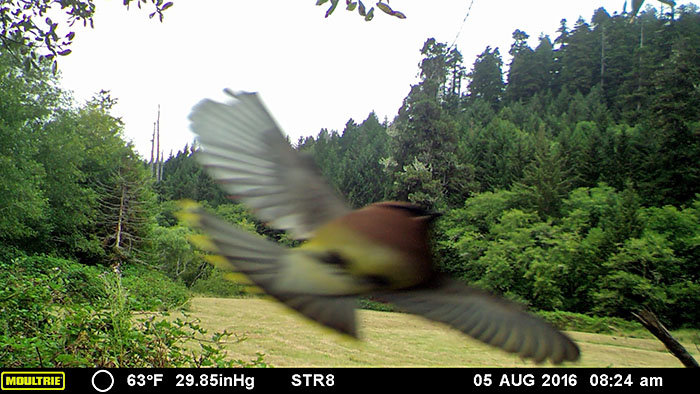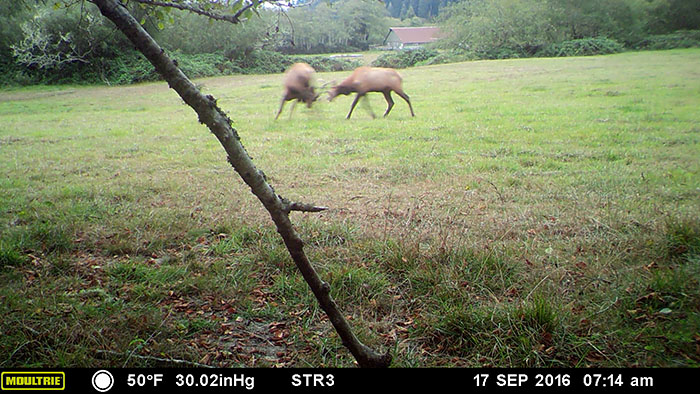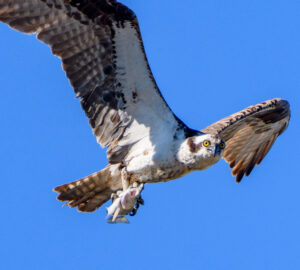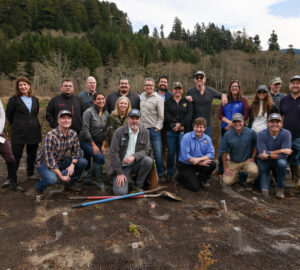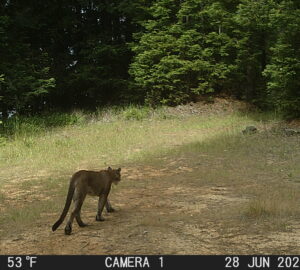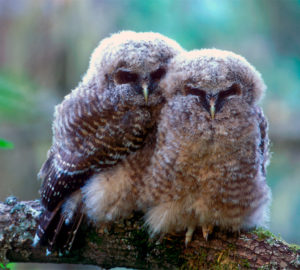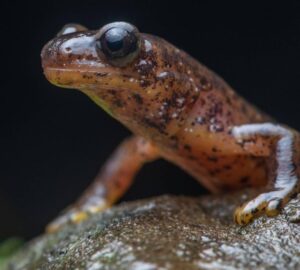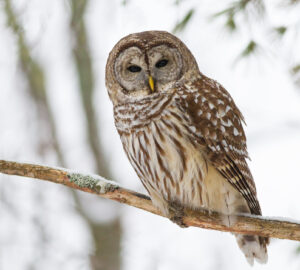Hoping to catch a glimpse of the various wild animals living on and passing through the Orick Mill Site, Save the Redwoods League set up multiple wildlife cameras – and we found some incredible species on the property. The League-owned Orick Mill Site is strategically located at the scenic gateway to Redwood National and State Parks near the confluence of Redwood and Prairie Creeks in Humboldt County. Its unique location, within the watershed and adjacent to the protected national and state parkland, make the Orick Mill Site a prime location to serve all kinds local wildlife.
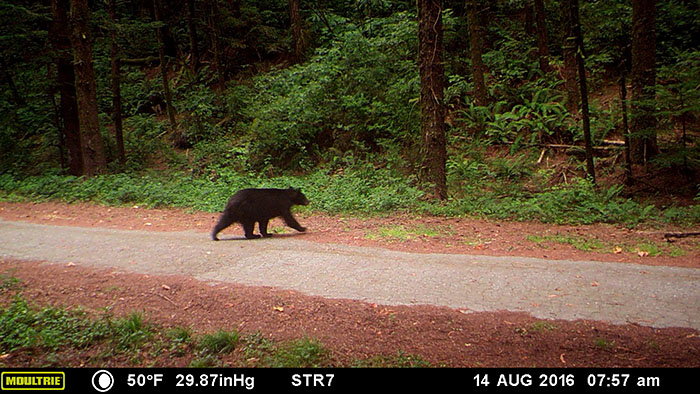
Here is a black bear (Urus americanus) using one of the old logging roads on the property as an easy way to travel. While this bear may look ferocious, black bears are omnivores, meaning they rely on both plants and meat for food. Black bear often forage for berries, plants, honeycombs, insects, fish, and small mammals, but one of their favorite treats to eat is the inner layer of the bark on trees, known as sapwood.
Although blurry, this photo shows a cedar waxwing (Bombycilla cedrorum) in flight. One of the most interesting features of this bird, and what gives them their name, are the red waxy tips on their secondary feathers on their wings. These beautiful birds can also be identified by the yellow band on the tips of their tail feathers and their black eye masks, which make them look like little bandits. The cedar waxwing specializes in eating fruit, and they eat a lot of it. While other birds often separate out the seeds and regurgitate them, cedar waxwings eat fruit seeds and all. They have even been known to get a little tipsy from time to time, eating overripe, fermented berries.
One of the most common species found on the Orick Mill Site is the elk (Cervus elaphus). These massive mammals might be vegetarians, but they are still dangerous. During their mating season, a dominant bull elk will guard his harem, a group of female elk, from other males. Here, two bull elks are jousting, using their antlers to fight each other. They can cause serious damage to their opponents, and the winner will have the role of continuing to protect the harem from other males that seek to mate.
Learn more about the restoration work we’re doing at Orick Mill so more species can return to their former haunt. Stay tuned for more updates from the League’s wildlife cameras!
